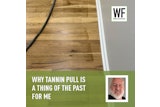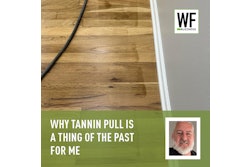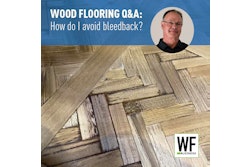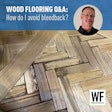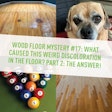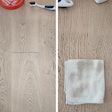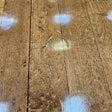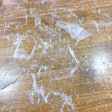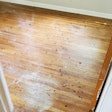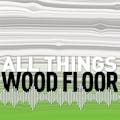

The flooring was sanded, and the contractor wanted to seal and coat on that same day. My advice was not to do that. If there had been contamination, it could still be present, possibly between boards, that could have been activated. After all that had transpired, it would be wise to wait. We all agreed and, sure enough, after sanding a mild oily wicking showed itself randomly, mostly between board seams. It was not terrible, but it was present.
After a light cleaning, I suggested the first coat be an oil-modified sealer that could possibly bond with whatever mild oil residue might remain. The other option was to use an alcohol-based seal coat. The contractor was familiar with Lenmar Rapid Seal, a 550-VOC oil-modified fast-dry sealer, and I agreed that would fit the bill. I reviewed the security camera recordings after the sealer coat was applied and also after the first coat of oil-mod poly and everything looked good. In fact, the floor looked excellent.
And thennnnnn … IT CRAWLED! It had returned. An entirely new system with new tools, supplies, and product, and there it was again! Now it was just mocking us. What can mere floor guys do against a force this evil, this insidious, this icky?!

The tumblers soon fell into place as the mystery unfolded. The flooring contractor told me that the first guy was his ex-business partner. They had a good relationship so he did not want to badmouth him but, knowing his ex-partner’s work, he felt he could do a proper job. After he had trained this individual, he sold him the company and all the equipment. That answered the question about why the equipment had appeared to be that of a pro but the work had not—the owner was a seasoned veteran who sold his equipment to a novice.
This explained why the first crew had some difficulty, but what about the contamination showing up twice? Both crews had adopted an old-school habit of tacking an oil finish with paint thinner before coating. This is where both crews contributed contamination to the floor coating system. Same chemicals, same supplier, same results. This particular brand of thinner was inhibiting the chemical bond needed for the finish coating to be 100% effective. It had caused the crawling.
Prior to one final attempt at a clean finish coat, I spoke with the contractor and asked him to please NOT use ANY thinner on the floor or in the finish and to make sure the finish was not cold—it should be 62–70ish degrees. I recommended they abrade the floor with yellow Norton Sand Dollars and clean the floor with a treatment like Clean Strong or Prep to remove any residual contaminant and follow up with a butyl-based floor cleaner. Then, apply a final coat of oil-modified 550-VOC poly in quarts using only whatever tools they felt comfortable using— clean, debris-free applicators and brushes.
It was like Superbowl Sunday as clips from the security system rolled in as they knocked out the final coat like champs. The floor was at least 95% better and the crawling had been vanquished.
This was the first time I had witnessed the floor tell the story while it played out on my laptop through home security recordings. If you pay attention, the floor truly does tell the story. Another floor mystery solved.
As the final text messages filtered through, something caught my eye: the word “wavy.” I was shutting down my phone and saw a late text with that word. Security photos rolled in from spooky floor central, and I read the following: “Thank you for everything, the floors look so much better. Can you look at these photos and tell me what makes the flooring so wavy?” Here is what I saw:

And that, my friends, is the next flooring mystery … the drama continues!
See more wood floor mysteries from Stephen Diggins:
Wood Floor Mystery #1: The Spreading Black Spots
Wood Floor Mystery #2: The Poly That Wouldn't Stick
Wood Floor Mystery #3: The Tale of the Half-Cupped Floors, Part 1










